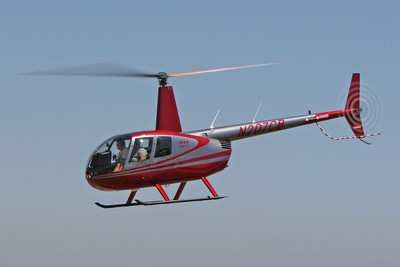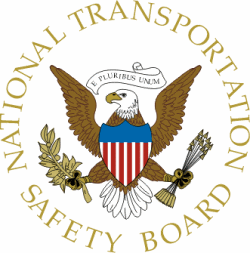Aircraft Involved In An Alaska Accident Involving Main Rotor
Transmission Design
The NTSB has made a series of recommendations to the FAA
concerning Robinson R44 helicopters. The recommendations come
following an NTSB investigation involving one of the aircraft in
Alaska in May of 2009. In that accident, an R44, N7196H, sustained
substantial damage to the main rotor and tailboom during a hard
landing, about 57 miles northwest of Iliamna, Alaska. The
commercial pilot and the two passengers were not injured. The
helicopter was being operated by the State of Alaska, Alaska State
Troopers, Anchorage, Alaska, in VFR conditions.
File Photo

In a written statement, the pilot reported that, about 1.5
minutes into the flight, he felt a vibration he had not felt
before. He said the vibration was mostly in the pedals, then a
slight yawing motion developed. The pilot said the vibrations
became oscillations, in both yaw and pitch, to the point he felt
the helicopter was going to come apart. He said an emergency
landing was his only option. During a telephone conversation on May
27, 2009, an accident investigator for Robinson Helicopter told the
NTSB IIC that he was familiar with the anomaly reported by the
pilot, which the manufacturer referred to as mast rocking.2 He
stated that the oscillation was more of a “bucking”
motion due to the fore-and-aft movement of the rotor mast and that
the manufacturer had found the onset of the oscillation regime was
exacerbated by a forward CG (although still within the CG envelope)
and a 30º banked turn to the left; he indicated that the
helicopter may also begin to oscillate in a right turn but entered
the oscillation regime more readily in a left turn.
The Robinson Helicopter investigator also stated that the
manufacturer determined that the oscillation is not divergent (that
is, the main rotor blades do not diverge from their normal plane of
rotation) and can be mitigated by adding power. Pilots can then
land the helicopter safely.
The NTSB determined that the probable cause of the Iliamna
accident was “the main rotor transmission mount design, which
resulted in an in-flight vibration/oscillation and damage to the
helicopter during the subsequent emergency descent and hard
landing. Contributing to the accident was the lack of information
from the manufacturer regarding this known flight oscillation, and
loading the helicopter beyond the forward center of gravity limit
by the pilot.” At least three similar events preceded the
Iliamna accident.

In its recommendations, the NTSB says the FAA should require
Robinson Helicopter to resolve the root cause of the mast-rocking
vibration in the main rotor assembly to ensure that all applicable
R44 helicopters are free of excessive vibrations in all flight
regimes, as required by 14 Code of Federal Regulations Section
27.251, "Vibration." It should further require Robinson Helicopter
to maintain a database of all reported incidents of mast rocking in
the main rotor
assembly of R44 helicopters.
The board also says that the FAA should require Robinson
Helicopter to issue a service letter to all approved service
centers describing the mast-rocking vibration that can occur in the
main rotor assembly of R44 helicopters and instructing service
centers to report all incidents of mast rocking to the
manufacturer, require Robinson Helicopter to amend the R44
helicopter flight manual to inform pilots of the potential for
mast-rocking vibration in the main rotor assembly and how to safely
exit the condition, and require that the Robinson Helicopter R44
pilot training program be revised to provide pilot instruction in
the recognition and mitigation of in-flight mast-rocking vibrations
in the main rotor assembly.
 ANN's Daily Aero-Term (12.19.25): Ultrahigh Frequency (UHF)
ANN's Daily Aero-Term (12.19.25): Ultrahigh Frequency (UHF) NTSB Prelim: Cirrus Design Corp SR22T
NTSB Prelim: Cirrus Design Corp SR22T Classic Aero-TV: The Red Tail Project--Carrying the Torch of the Tuskegee Airmen
Classic Aero-TV: The Red Tail Project--Carrying the Torch of the Tuskegee Airmen Aero-News: Quote of the Day (12.19.25)
Aero-News: Quote of the Day (12.19.25) Airborne 12.17.25: Skydiver Hooks Tail, Cooper Rotax Mount, NTSB v NDAA
Airborne 12.17.25: Skydiver Hooks Tail, Cooper Rotax Mount, NTSB v NDAA




